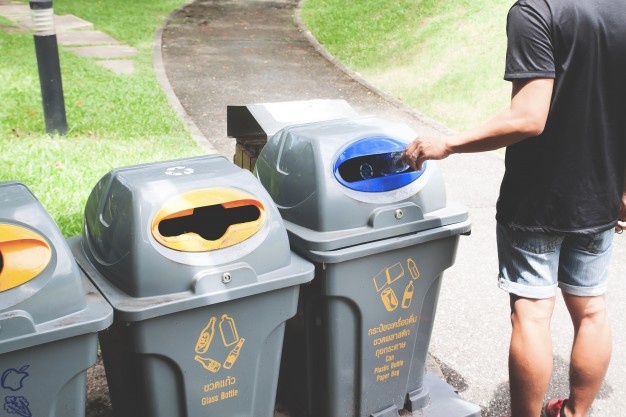8 Rarely Known Benefits of Tobacco for Health, Not Just Raw Material for Cigarettes
Here are some rarely known benefits of tobacco for the body. It can even be a powerful herbal medicine. What are the benefits of tobacco? Let's check it out KLovers.

Kapanlagi.com - You should know the types of waste in order to know how to prevent environmental pollution. Because, until now, waste is still a big problem, especially in Indonesia. Although, basically having a waste supply is an awareness of every individual towards the surrounding environment. Even since childhood, you must have been taught the importance of disposing of waste in its proper place. Because, if left unchecked, the impact of waste will affect daily life, including health problems.
Therefore, to overcome the waste problem, waste management is very important to be carried out. Well, one of the main steps in waste management is sorting. This is why knowing the types of waste is very important because the sorted and discarded waste should be collected based on its type for easier waste management. Instead of being curious, let's directly see the complete review of the following types of waste.

(credit: freepik)
Based on its nature, waste is divided into three types: organic waste, inorganic waste, and hazardous waste. To understand more clearly, please refer to the following explanation.
1. Organic Waste
Organic waste is a type of waste that can decompose. This type of waste can still be processed into something useful. You don't need to be confused anymore when you want to dispose of organic waste. There are already many organic waste bins available, which are usually green. Organic waste includes leaves and food scraps that can still decompose and be used again as compost.
2. Inorganic Waste
Another type of waste based on its nature is inorganic waste. This type of waste does not easily decompose or is waste that is made through a mechanical process. Inorganic waste is very difficult to break down and requires different management to be utilized. Examples of inorganic waste include plastic, paper, bottles, wood, food packaging, and many more. Inorganic waste can be utilized to create crafts or other items that can be sold.
3. Hazardous Waste
Next, another type of waste based on its nature that you need to know is hazardous waste. This type of waste contains dangerous or toxic substances. This type of waste requires more complex and careful processing. The types of B3 waste include hospital waste and factory waste.

(credit: freepik)
In order not to disturb the cleanliness of the environment and the resulting impact, therefore you must also know the types of waste based on their form. To find out more clearly, please refer to the following review.
4. Solid
The first type of waste based on its form is solid waste. Solid waste is waste that has a shape and will not change its shape if there is no processing process. The types of solid waste include all types of waste except urine, human feces, and other liquid waste.
5. Liquid
Next, the type of waste based on its form is liquid waste. Similar to solid waste, liquid waste can be very dangerous if not properly treated. One example of liquid waste is the disposal of motor vehicle oil. Engine oil has a chemical mixture that is very dangerous, especially if it is discharged into the waterways.

(credit: freepik)
You should also know that waste is categorized based on its source. Below is a more detailed explanation of the types of waste based on their source.
6. Human Waste
This type of waste comes from humans, specifically the waste excreted from the body. This waste must be chemically processed in order to be used as fertilizer.
7. Natural Waste
Waste that comes from nature is one of the processes that occur without planning. One type of waste produced by nature is when fruits or leaves fall to the ground and undergo the process of decomposition.
8. Animal Waste
Similar to humans, animals also have their own waste. The type of waste that comes from animals is when their excrement is disposed of. The excrement from animals can generally be used as manure.
9. Consumption Waste
This type of waste is often found when uneaten food is discarded. Consumption waste is commonly found in restaurants. This condition is very wasteful and can be prevented by stopping eating before you are full.
10. Radioactive Waste
One of the most dangerous types of waste that requires a long process is waste from radioactive waste. This type of waste will not disappear in a short period of time. It would be very dangerous if there is a leak of radioactive waste as it can kill the surrounding environment.
11. Industrial Waste
Industrial waste is a type of waste that comes from industrial areas consisting of general waste and hazardous liquid or solid waste. Industrial waste has contents that cannot disappear without proper treatment.
12. Mining Waste
Lastly, the type of waste based on its source is mining waste. Mining is one form of industry that requires a lengthy process. In addition, mining waste will release hazardous waste and needs to be treated properly to avoid harm.
Those are several types of waste that you often encounter around you. After knowing the types of waste, make it a habit to dispose of waste wisely according to its type. Hope this is useful.
(kpl/dtm)
Cobain For You Page (FYP) Yang kamu suka ada di sini,
lihat isinya
Here are some rarely known benefits of tobacco for the body. It can even be a powerful herbal medicine. What are the benefits of tobacco? Let's check it out KLovers.
Production is the process of creating goods or services. What is the detailed explanation? Read it here.
Typhoid fever is one of the health disorders that occur due to infection by the bacteria salmonella typhi. This infection causes various symptoms that can be experienced by sufferers, ranging from fever to digestive problems.
There are several tips to consider when making a curriculum vitae. But before knowing these tips, it is better to understand that a curriculum vitae is an important document containing personal information.
Flood disasters are one of the disasters that frequently occur in various regions, including Indonesia. This natural disaster often occurs in low-lying areas and areas prone to flooding, such as places near water and disturbances in drainage systems.
In Indonesia itself, coffee also has various types with different characteristic flavors. Therefore, as a coffee lover, it is incomplete if you don't know the world-famous types of coffee. Curious?
Riba is something that needs to be avoided in the teachings of Islam. Here is a review of the types of riba and other explanations surrounding it.
Here are some benefits of sugarcane juice for body health and beauty that you must know. What are those benefits? Let's check it out, KLovers.
Here are some amazing benefits of garlic for men, and you must know. What are the benefits? Let's check it out KLovers.
Here are some extraordinary benefits of istighfar and some of its recitations. What are the benefits of istighfar? Let's check it out KLovers.
Swollen feet can cause discomfort and even interfere with daily activities. The causes of swollen feet can occur due to various factors, including signs of certain diseases. This condition makes the size of the feet appear larger than usual due to disrupted blood flow.
Self-confidence is needed by every individual to dare to do something without fear. This self-confidence can also ignite the spirit to facilitate the career being built.